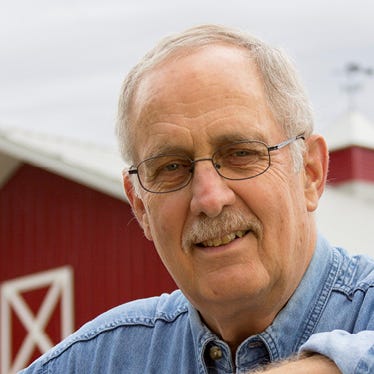July 22, 2021

Purdue University Extension forage agronomist Keith Johnson says in some ways, taking care of your pasture is like taking care of yourself.
“When I don’t get enough sleep, I get grumpy, become less productive, and I’m probably not as safe as I normally would be,” he says. “The same is true for the forages in your pasture. If they don’t get the care and rest they need, they will be much less productive and healthy than they could be.”
Related: Make grazing go smoother with these tips and gadgets
Johnson explains that one major way graziers seriously abuse pastures is by overgrazing them, which he says can cause extreme damage to plants and the overall pasture.
“Overgrazing is harmful to plant function, essentially starving it, and is something you really need to avoid — not only to make your pasture optimally productive during the growing season, but to keep it that way for years to come,” he says.
To generations of children who grew up hearing that cleaning their plates would keep them well fed and somehow positively impact hungry children in Africa, not having animals “clean their plates” — all for the purpose of having more to eat later — may seem counterintuitive. Nevertheless, Johnson says if you want to maximize your pasture’s production, that’s exactly what you should do.
“Move your animals to the next paddock when you’re down to 4 inches of residual growth,” he says. “Actually, leaving half the growth is not a waste.”
Protecting your pasture’s ‘factory’
Johnson says forage plants perform much like a factory that functions according to a mathematical formula: Photosynthesis minus respiration equals growth plus stored reserves.
In a nutshell, photosynthesis takes place in the leaves, which essentially function as solar panels. Photosynthesis results in the transport of sucrose to locations in the plant where energy is needed for respiration, growth and storage.
Specifically, the “foundation” of the factory includes the crown, or lower part of the plant, which is the storage organ where growth and regrowth can occur, and the root system, which functions as the warehouse for energy reserves.
“It takes leaf matter to create leaf matter,” Johnson says. “If we overgraze and don’t have enough photosynthesis and respire too much, the remainder of growth and stored reserves is pretty small. And while the purpose of the leaves of the plant is for grazing, you need to leave enough leaf area to provide for adequate photosynthesis.”
Johnson says you can’t overgraze your forages without robbing their manufacturing and warehousing functions, which will, in turn, seriously impair overall forage production and the health of your stand. He also compares overgrazing your pasture to letting your car run out of gasoline.
“The storage areas of forage plants are like the fuel tank of your car,” he says. “You want to begin the grazing season with your ‘tank’ full of carbohydrates and proteins. Then, as you graze or mow your forages, you need to not overgraze, and allow sufficient time to ‘refill your tank,’ lest you run out of gas and be stuck on the roadside.
“Then, at the end of this journey in the mid-fall, after many fuel fill-ups — or multiple grazings or hay harvests along the way — you make sure the ‘fuel tank,’ which is the storage or reserve, is filled again so you can have another successful journey.”
Boone writes from Wabash, Ind.
About the Author(s)
You May Also Like






